OP: “Hikaru Toki (光るとき)” by Hitsuji Bungaku (羊文学)
 This series is an odd one both for me and anime, in so many ways. First off, while it’s obviously been in development for some time this Heike Monogatari adaptation wasn’t revealed publicly until about a week ago – a week before the premiere. I’d already written my preview post (though fortunately hadn’t yet recorded the video). In fact as soon as I published that I then turned around and watched this episode, which is a first for me. I mean, technically this should be considered a summer series since it’s premiering in September, but there was no way I wasn’t going to preview it.
This series is an odd one both for me and anime, in so many ways. First off, while it’s obviously been in development for some time this Heike Monogatari adaptation wasn’t revealed publicly until about a week ago – a week before the premiere. I’d already written my preview post (though fortunately hadn’t yet recorded the video). In fact as soon as I published that I then turned around and watched this episode, which is a first for me. I mean, technically this should be considered a summer series since it’s premiering in September, but there was no way I wasn’t going to preview it.
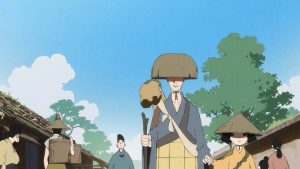 I’ve just written my longest season preview entry ever for any series about Heike Monogatari – I won’t rehash the whole thing here but I’d encourage you to read that for more detail about this story, this production, and my relationship with it. And there’s a lot. I unreservedly love the source material – I consider it the greatest of the Japanese classics and one of the greatest stories ever told. I’d also encourage you to read up a little on the Genpei War and the Heian Period generally (though there will be spoilers of course). It’s the most compelling time in Japanese history for me, and I’ve often wondered (not least on twitter) why it’s gotten so little attention in anime and manga. And Heike Monogatari virtually none.
I’ve just written my longest season preview entry ever for any series about Heike Monogatari – I won’t rehash the whole thing here but I’d encourage you to read that for more detail about this story, this production, and my relationship with it. And there’s a lot. I unreservedly love the source material – I consider it the greatest of the Japanese classics and one of the greatest stories ever told. I’d also encourage you to read up a little on the Genpei War and the Heian Period generally (though there will be spoilers of course). It’s the most compelling time in Japanese history for me, and I’ve often wondered (not least on twitter) why it’s gotten so little attention in anime and manga. And Heike Monogatari virtually none.
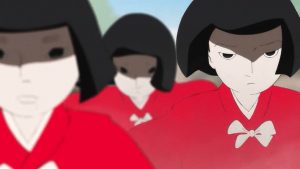 Needless to say, when this series was announced I was stunned, thrilled, and nauseous all at the same time. Especially after I saw the preview. What I wanted more than anything – and have pleaded for – is a faithful adaptation. It immediately became clear this wasn’t it, and that rankled. To begin with this main character doesn’t exist in the original story, which is actually a collection or oral tales told by the blind Biwa Houshi storyteller monks. They were compiled in written form in the 14th Century, and this series is loosely based on the translation by Furukawa Hideo (who also wrote the Heike-themed novel Yuasa Masaaki’s upcoming film Inu-oh is based on) – the first ever to present Heike Monogatari in modern Japanese.
Needless to say, when this series was announced I was stunned, thrilled, and nauseous all at the same time. Especially after I saw the preview. What I wanted more than anything – and have pleaded for – is a faithful adaptation. It immediately became clear this wasn’t it, and that rankled. To begin with this main character doesn’t exist in the original story, which is actually a collection or oral tales told by the blind Biwa Houshi storyteller monks. They were compiled in written form in the 14th Century, and this series is loosely based on the translation by Furukawa Hideo (who also wrote the Heike-themed novel Yuasa Masaaki’s upcoming film Inu-oh is based on) – the first ever to present Heike Monogatari in modern Japanese.
 So then, this is an important series. To me, and to Japan, where the source material is universally known and taught in schools. The two species of Japanese firefly are called the Heike and the Genji after the Taira and Minamoto clans (Heike and Genji are alternative Kanji readings). It must be said that this is “Heike Monogatari” – it’s the story of the Taira, not the Minamoto who battled them. But the source material takes the form of Buddhist parable, lessons on impermanence and arrogance and cruelty and forgiveness. It judges, but it doesn’t take sides. This anime can take many liberties (and already is) and still succeed, but that’s one element that it absolutely cannot twist around. That’s the third rail.
So then, this is an important series. To me, and to Japan, where the source material is universally known and taught in schools. The two species of Japanese firefly are called the Heike and the Genji after the Taira and Minamoto clans (Heike and Genji are alternative Kanji readings). It must be said that this is “Heike Monogatari” – it’s the story of the Taira, not the Minamoto who battled them. But the source material takes the form of Buddhist parable, lessons on impermanence and arrogance and cruelty and forgiveness. It judges, but it doesn’t take sides. This anime can take many liberties (and already is) and still succeed, but that’s one element that it absolutely cannot twist around. That’s the third rail.
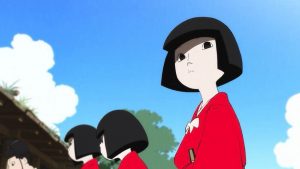 What else must be remarked upon is the staff here. The director is Yamada Naoko, one of the great lions of Kyoto Animation. When one of those lions leaves KyoAni – especially now – that’s news. The writer is Yoshida Reiko, who should certainly need no introduction to anime fans as she’s one of the foremost writers in the industry. The music (and ED) is by Ushio Kensuke, outside of anime known by the stage name of agraph, and one of the most respected composers in the medium. It’s a stellar group, and we know Science SARU is capable of great work. We also know they’ve been in the news for adverse working conditions, and the cratering of the Nihon Chinbotsu 2020 production is evidence it’s been happening for a while. In that sense, this show is a crapshoot.
What else must be remarked upon is the staff here. The director is Yamada Naoko, one of the great lions of Kyoto Animation. When one of those lions leaves KyoAni – especially now – that’s news. The writer is Yoshida Reiko, who should certainly need no introduction to anime fans as she’s one of the foremost writers in the industry. The music (and ED) is by Ushio Kensuke, outside of anime known by the stage name of agraph, and one of the most respected composers in the medium. It’s a stellar group, and we know Science SARU is capable of great work. We also know they’ve been in the news for adverse working conditions, and the cratering of the Nihon Chinbotsu 2020 production is evidence it’s been happening for a while. In that sense, this show is a crapshoot.
 While I would obviously preferred it if Yoshida and Yamada had played it straight, they’ve chosen to recast the story around the original character of Biwa (Aoi Yuuki). She’s the daughter of a blind man, presumably a Biwa Houshi, who’s killed by the Kaburo – the roving band of Taira pageboys who roamed the capital searching for offenses against the clan. She also has one blue eye which can see the future, something her father forbade her to do. That eye has seem the decline and fall of the Heike, which makes little sense given that they were at the height of power – dominating the imperial court, the military, and the provinces.
While I would obviously preferred it if Yoshida and Yamada had played it straight, they’ve chosen to recast the story around the original character of Biwa (Aoi Yuuki). She’s the daughter of a blind man, presumably a Biwa Houshi, who’s killed by the Kaburo – the roving band of Taira pageboys who roamed the capital searching for offenses against the clan. She also has one blue eye which can see the future, something her father forbade her to do. That eye has seem the decline and fall of the Heike, which makes little sense given that they were at the height of power – dominating the imperial court, the military, and the provinces.
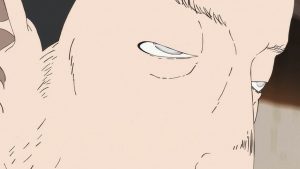 The Heike are centered around Taira no Kiyomori (Tesshou Genda), the ambitious and fearless family head who shepherded the clan’s rise to power in the wake of their success suppressing the Hougen Rebellion. He’s planning to move to Fukuhara – present-day Kobe (about 30 minutes by Shinkansen but a day’s ride in the Heian Era) to build a deep-water port and expand the clan’s wealth and power through trade. He’s also planning to build an audacious shrine on the water at Miyajima, which would become Itsukushima Jinja – now a hugely popular pilgrimage site and tourist attraction. He turns affairs in Kyoto over to eldest son Shigemori (Sakurai Takahiro). He also has a roving blue eye – though there’s no historical record of that actually being the case.
The Heike are centered around Taira no Kiyomori (Tesshou Genda), the ambitious and fearless family head who shepherded the clan’s rise to power in the wake of their success suppressing the Hougen Rebellion. He’s planning to move to Fukuhara – present-day Kobe (about 30 minutes by Shinkansen but a day’s ride in the Heian Era) to build a deep-water port and expand the clan’s wealth and power through trade. He’s also planning to build an audacious shrine on the water at Miyajima, which would become Itsukushima Jinja – now a hugely popular pilgrimage site and tourist attraction. He turns affairs in Kyoto over to eldest son Shigemori (Sakurai Takahiro). He also has a roving blue eye – though there’s no historical record of that actually being the case.
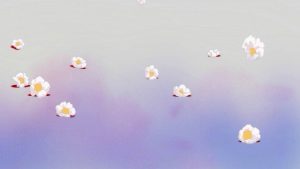 Eventually the orphaned Biwa turns up at the Taira estate in Kyoto – to gloat, perhaps – but Shigemori sees the bond between them and takes a shine to her. He takes her in as his ward alongside his four sons, the most important of which are the cultured eldest Koremori (Miyu Irino) and second son Sukemori (Kobayashi Yumiko). It’s he who sets off the event which many consider the start of the Heike’s declining fortunes by accidentally disrespecting the emperor’s regent, causing the regent to order him savagely beaten. Shigemori is content to apologize and move on, but but Kiyomori has other ideas and humiliates the regent and his men by surrounding their procession and forcing them to cut off their topknots. The emperor is unsurprisingly less than pleased.
Eventually the orphaned Biwa turns up at the Taira estate in Kyoto – to gloat, perhaps – but Shigemori sees the bond between them and takes a shine to her. He takes her in as his ward alongside his four sons, the most important of which are the cultured eldest Koremori (Miyu Irino) and second son Sukemori (Kobayashi Yumiko). It’s he who sets off the event which many consider the start of the Heike’s declining fortunes by accidentally disrespecting the emperor’s regent, causing the regent to order him savagely beaten. Shigemori is content to apologize and move on, but but Kiyomori has other ideas and humiliates the regent and his men by surrounding their procession and forcing them to cut off their topknots. The emperor is unsurprisingly less than pleased.
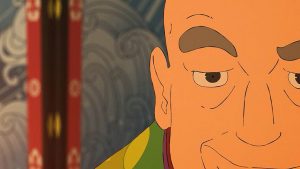 So, for all that, how does this premiere episode actually work? It’s superb for the most part – not quite transcendent, but certainly classy and often visually stunning. If you’re going to shoehorn an original protagonist in, getting Aoi Yuuki doesn’t hurt, as she’s one of the best seiyuu around – but I still have my doubts about Biwa. The cast seems strong generally, the music is lovely, and the direction and animation are quite striking. It plays as more Science SARU than Kyoto Animation but there are elements of Yamada’s signature that slip through. She employs a lot of live-action (her first love) techniques, and generally favors looseness and snap over gently flowing classicism.
So, for all that, how does this premiere episode actually work? It’s superb for the most part – not quite transcendent, but certainly classy and often visually stunning. If you’re going to shoehorn an original protagonist in, getting Aoi Yuuki doesn’t hurt, as she’s one of the best seiyuu around – but I still have my doubts about Biwa. The cast seems strong generally, the music is lovely, and the direction and animation are quite striking. It plays as more Science SARU than Kyoto Animation but there are elements of Yamada’s signature that slip through. She employs a lot of live-action (her first love) techniques, and generally favors looseness and snap over gently flowing classicism.
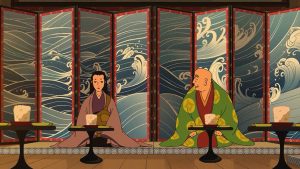 There was almost no way Heike Monogatari wasn’t going to be an order of magnitude more interesting than most anime, and it is. It can’t really be judged by the usual standard because it’s not trying to do things TV anime often do. There are legit questions about Science SARU’s ability to sustain a production, and if the reports of 11 episodes are true that’s not nearly enough time to do the source material justice – if indeed that’s something Yamada and Yoshida intend to try to do. There’s also the matter of whether their original twist on a peerless source material will work, and we won’t know that answer for a while. But this is certainly something special, something important, and something unique in anime. Let’s hope we look back on it as something great, too.
There was almost no way Heike Monogatari wasn’t going to be an order of magnitude more interesting than most anime, and it is. It can’t really be judged by the usual standard because it’s not trying to do things TV anime often do. There are legit questions about Science SARU’s ability to sustain a production, and if the reports of 11 episodes are true that’s not nearly enough time to do the source material justice – if indeed that’s something Yamada and Yoshida intend to try to do. There’s also the matter of whether their original twist on a peerless source material will work, and we won’t know that answer for a while. But this is certainly something special, something important, and something unique in anime. Let’s hope we look back on it as something great, too.
ED: “unified perspective” by agraph feat. ANI (++SCHADARAPARR++ (スチャダラパー)


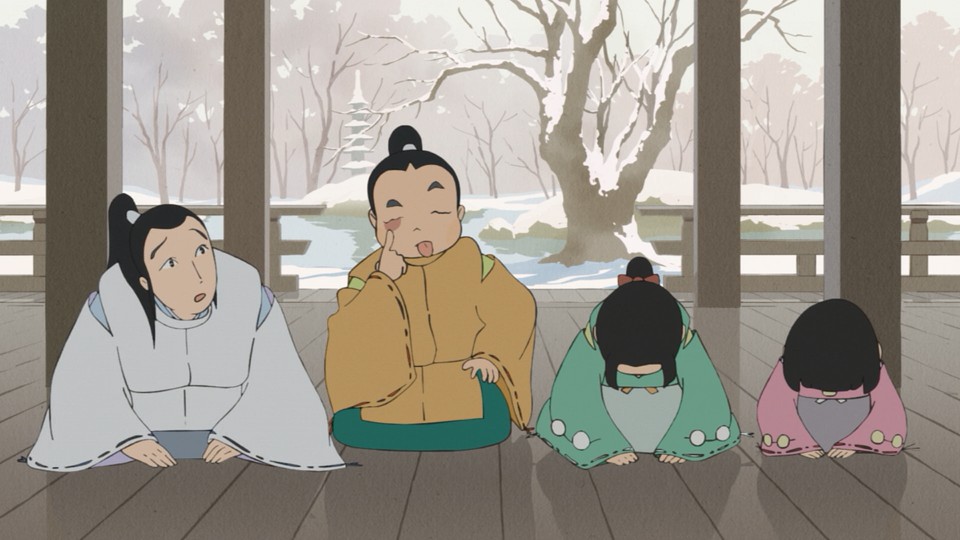
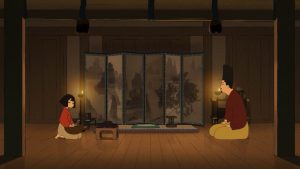
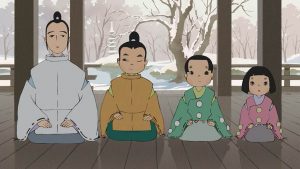
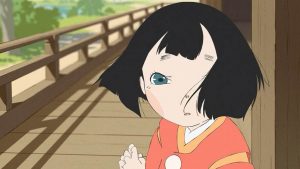
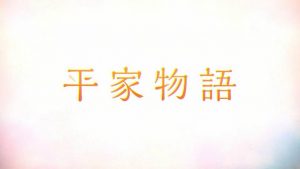
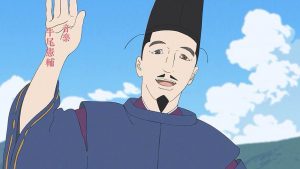
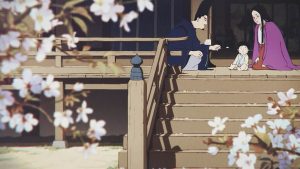
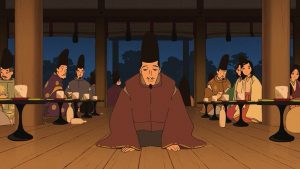
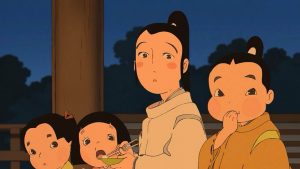

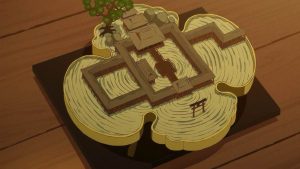
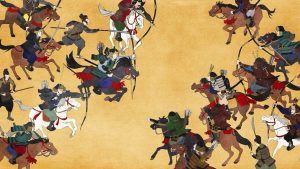

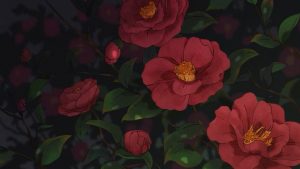
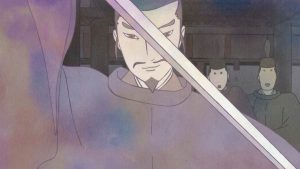
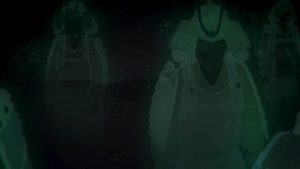
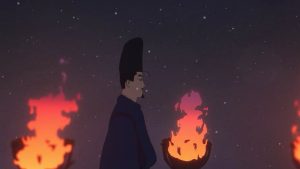
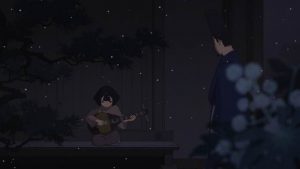
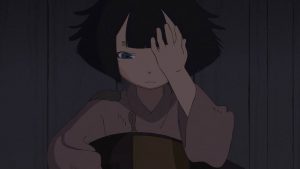
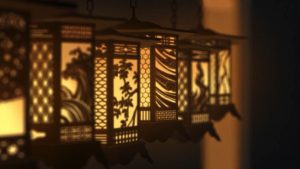
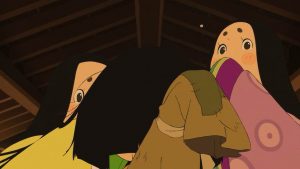
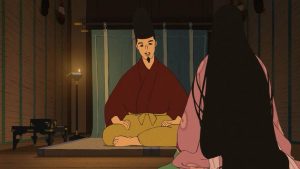
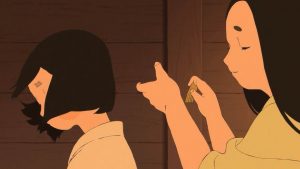
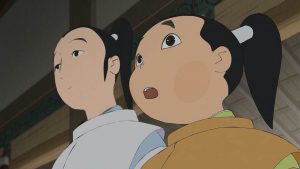
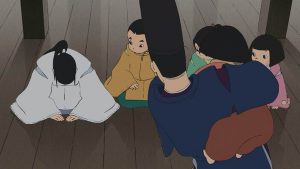
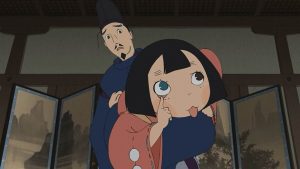
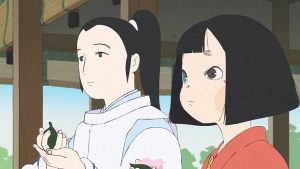
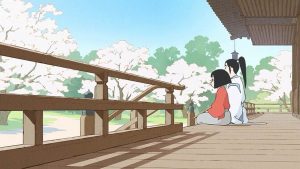
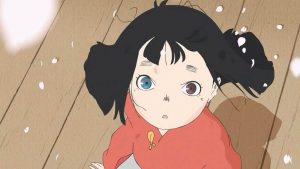
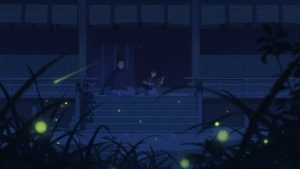
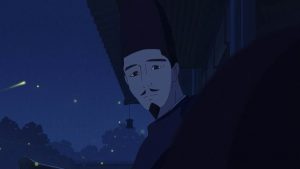
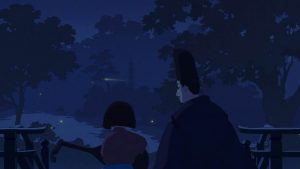

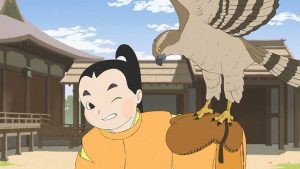

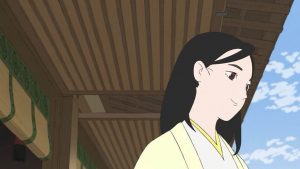
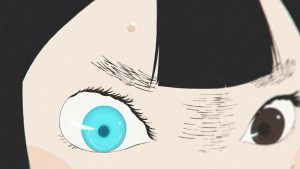
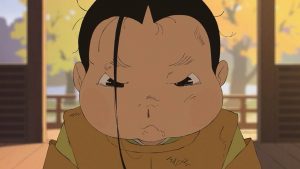
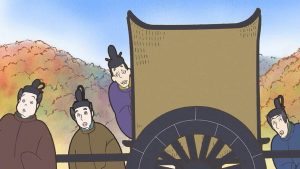
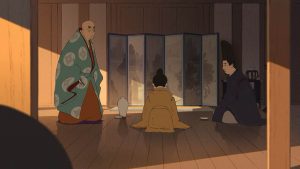
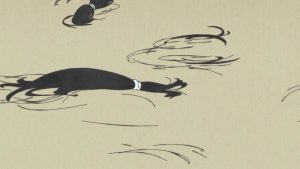
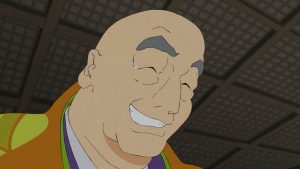
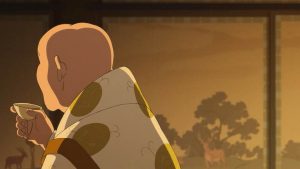
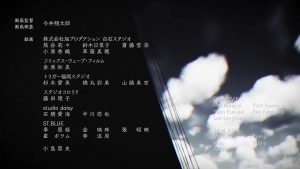

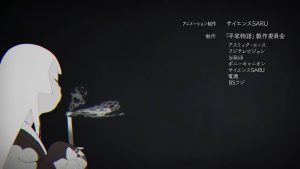

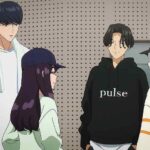
Darrel
September 17, 2021 at 12:00 amI thought it was a really solid premiere. I don’t know much about the original material, except that it is a revered classic, and hence don’t have my views colored by the baggage of expectation. That said 11 episodes is kind of short for a historical epic, and could definitely be a stumbling block for this series.
Mariesminnow
September 17, 2021 at 11:33 amWell if this series has accomplished one thing it’s gotten me to check out the original tales. I’m only a little ways in, but I can already tell that they are leaving a lot by the wayside. I understand why; my copy of the Tale of the Heike is 700 pages long; but already I feel like a lot of the depth of the story is getting flattened out. Tales like Tadamori bringing the knife to court, or Kiyomori’s interest in dancers get little nods, but don’t really have any impact without the full context. I feel especially sad to see that the story of Gio the dancer likely won’t be included, because it feels so vital to understanding Kiyomori and the Taira family’s pervasive power in Kyoto. It’s also a strange, lovely tale that captures the culture specific to the Heian period in the way that I was hoping this anime would. This will still probably be a great anime, but I feel like it could have been a classic.
Guardian Enzo
September 17, 2021 at 11:47 amThe tears I could shed if I let myself think about it. No question a faithful and full adaptation would have had a chance to be the greatest anime ever made. But it’d never have gotten funded in this day and age.
Collectr
September 17, 2021 at 10:03 pmIf I may use a line from “South Pacific”:
It’s a waste of time to worry
Over things that they have not
Be thankful for
The things they’ve got
Getting even a shortened, highly abridged adaptation of Heike Monogatari in this era of anime junk food is amazing. How Kingdom has managed to eke out more than 100 episodes is beyond me; is it the popularity of the underlying manga? Then perhaps Heike Monogatari needs a popular manga adaptation too.
For me, the premiere episode was stylistically interesting and well-told. The voice cast is great. Tesshou Genda shows Kiyomori’s ruthless streak hiding under a cover of frivolity (“Isn’t it amusing?”). Sakurai Takahiro (ol’ Shirokuma himself) is a favorite of mine. Yuuki Aoi conveys Biwa’s sharp edges as well as her unresolved emotions of grief (and possibly guilt) – no moe blob she.
If the adaptation takes only one key incident from each of the eleven chapters to fill eleven episodes, it’s still better than nothing.
Guardian Enzo
September 17, 2021 at 10:24 pm“Better than nothing” is not what I was dreaming of in my hypothetical Heike adaptation. It is, though, better than nothing. The key to happiness is diminished expectations, they say.
Kingdom is a massively popular manga that’s been roughly top-5 volume sales every year for a decade or more. Couldn’t be more straightforward.
Princess Usagi
September 19, 2021 at 10:19 amI thought it was an interesting (and dubious) choice for them to start the anime off with the kaburo instead of the gosechi dancers. Starting off with the gosechi dancers and their fate would have made more sense, given how it seems to foreshadow (at least from my understanding) in general, the course of events that happen later on. Plus, it was such a beautiful and sad story.
I loved how the artwork for this episode emphasized the gentle beauty of the changing seasons. For me, when I think of the Heian era, one of the things that come to mind is the importance of the seasons to the court culture. For example, the dances, songs, poetry, etc. had different settings/variations depending on the season (well, I guess the same could be said of the Western world now, with decorations and songs specific to holidays like Christmas and Halloween) and the incorporation of the seasons into the premiere’s setting gorgeously captured that.
I was also happy that the opening poem in the book was incorporated (albeit, in abbreviated form). I loved when I opened the 1st page of Heike to read such a lovely poem. I ended up reading it over multiple times because it was so pretty-so I am glad they didn’t leave that out of the anime!
Guardian Enzo
September 19, 2021 at 10:25 amEvery bit of the source material that sneaks into the anime, I’ll celebrate. I suspect it won’t be all that much.